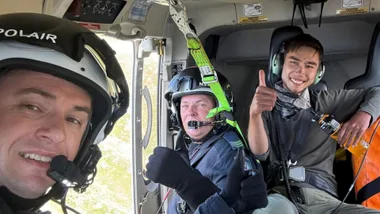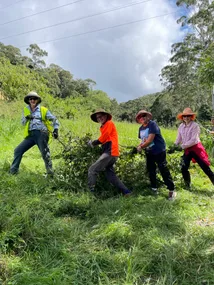By Glen Williams
Thanks to the eagle eye of a Woman’s Day reader, this pretty wallaby — once thought to be extinct — is now being protected. But its fight for survival isn’t over…
They don’t come much cuter than the beautiful bridled nailtail wallaby, and it’s hard to imagine that this inquisitive, furry little creature was once thought to be extinct.
For more than 30 years these wallabies were believed to have been totally wiped out — victims to predators such as cats and foxes. The last sighting of one was in 1937.
It may have stayed that way, had it not been for the keen observations of a Woman’s Day reader back in 1973. After reading an article in our magazine called “Our Rare Ones”, about Australia’s extinct species — including the bridled nailtail wallaby — a fencing contractor saw what he believed to be a population of the wallabies on a property in central Queensland.
Still in danger
Armed with his copy of Woman’s Day, which had a detailed drawing of the assumed extinct animal, he reported his sighting to Queensland Parks and Wildlife Service. Researchers confirmed the fencer’s remarkable discovery, and the property was converted into a national park.
But these endearing creatures were far from safe. With the remaining few constantly under threat from predators, they continued to be faced with extinction. In New South Wales, where they once flourished, they are still listed as extinct.
Getting them back
Woman’s Day is now helping to ensure this wallaby’s survival by throwing its support behind an endangered mammal recovery project being undertaken by Australian Wildlife Conservancy (AWC).
At the AWC’s Scotia Wildlife Sanctuary in western outback New South Wales, miracles are taking place. Here, in this red-earthed paradise, six endangered species are coming back from the brink of extinction in a fenced 8000 hectare feral-free enclosure.
Among the scrubby mallee woodlands, where the temperature can soar into the low 50s in summer, our nailtail wallaby is beginning to thrive.
Acclaimed naturalist Sir David Attenborough has described the Scotia Endangered Mammal Recovery Project as “vitally important for Australia and the planet” as it involves the establishment of the largest predator- and feral animal-free area on mainland Australia.
“Our aim is to get these populations back,” says Dr Joss Bentley, an ecologist with the Scotia project.
“All of Australia is going through an extinction crisis. It’s heartbreaking. To have large, fenced feral-free areas like Scotia is the only way we are going to be able to bring these animals back.
“This is not a zoo. Inside is a natural habitat. We just don’t have the foxes and cats. The animals survive here because there are no predators.
“The thing is, ultimately we would really like to get them outside the fence, but we can’t do that until we have an effective way of controlling foxes and cats.”
It’s at night that the true impact of the Scotia team’s conservation work can be seen. As darkness comes creeping, the place comes to life, teeming with stick-nest rats, burrowing bettongs, woylies, bilbies and, of course, our cheeky wallaby. The happy sight of joeys in pouches proves the population is on the increase.
Life returns
“This is what the Australian landscape should be like at night,” Joss whispers.
“It makes you realise how dead the rest of Australia is. The bush shouldn’t be a quiet place where occasionally you hear a little rustle in the trees.
“If it’s quiet, it means there’s nothing there. It should be like this — noisy with life. That’s how the early explorers described it.”
Joss admits her heart melts every time she lays eyes on the wallaby. “To think we thought they were extinct,” she says.
“You can’t help but fall in love with them. They each have their own little personality. I can watch them for hours. They’re just so fascinating, just beautiful.”
Pictures: Grant Turner.










